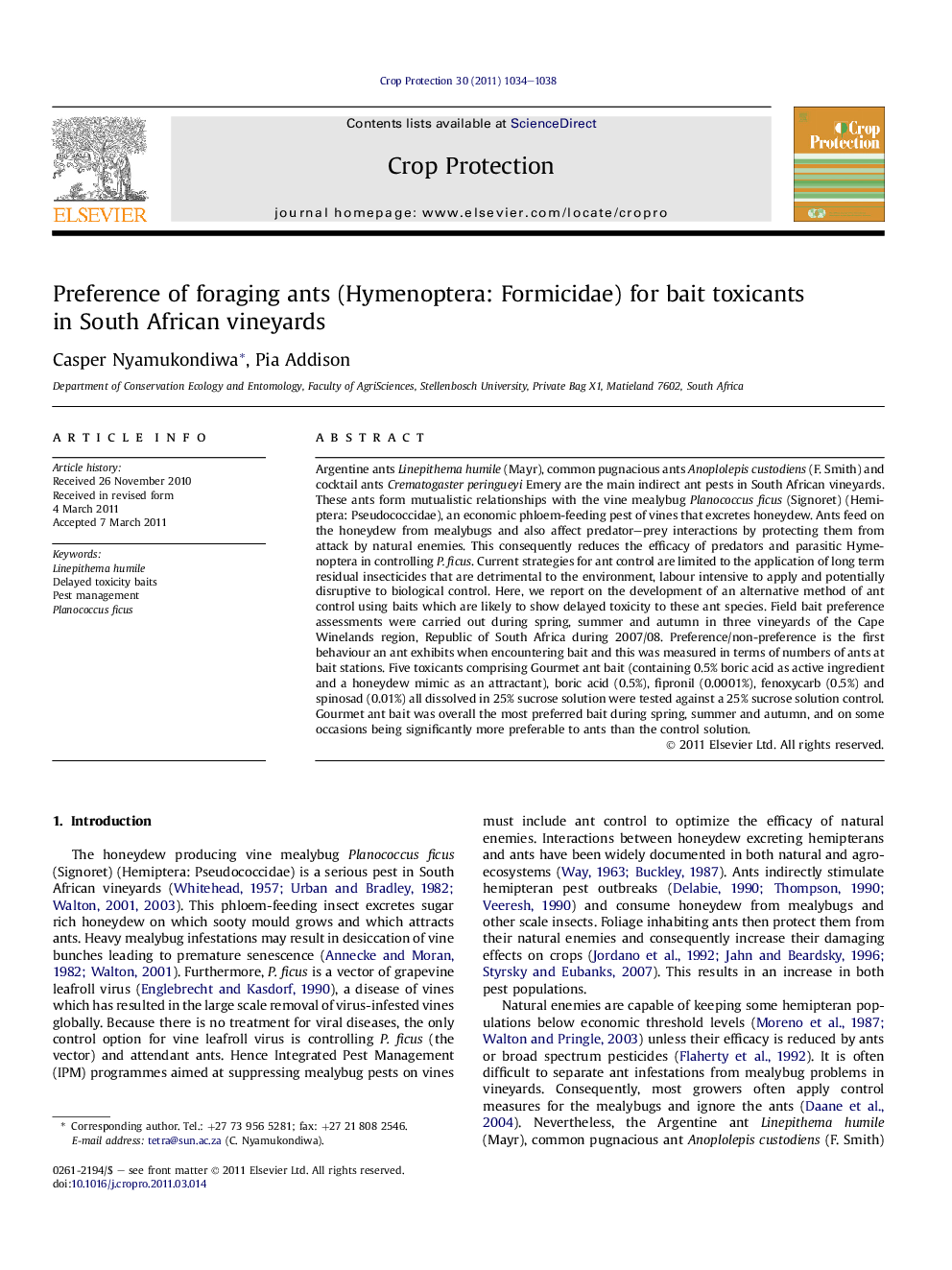| کد مقاله | کد نشریه | سال انتشار | مقاله انگلیسی | نسخه تمام متن |
|---|---|---|---|---|
| 4506766 | 1321328 | 2011 | 5 صفحه PDF | دانلود رایگان |

Argentine ants Linepithema humile (Mayr), common pugnacious ants Anoplolepis custodiens (F. Smith) and cocktail ants Crematogaster peringueyi Emery are the main indirect ant pests in South African vineyards. These ants form mutualistic relationships with the vine mealybug Planococcus ficus (Signoret) (Hemiptera: Pseudococcidae), an economic phloem-feeding pest of vines that excretes honeydew. Ants feed on the honeydew from mealybugs and also affect predator–prey interactions by protecting them from attack by natural enemies. This consequently reduces the efficacy of predators and parasitic Hymenoptera in controlling P. ficus. Current strategies for ant control are limited to the application of long term residual insecticides that are detrimental to the environment, labour intensive to apply and potentially disruptive to biological control. Here, we report on the development of an alternative method of ant control using baits which are likely to show delayed toxicity to these ant species. Field bait preference assessments were carried out during spring, summer and autumn in three vineyards of the Cape Winelands region, Republic of South Africa during 2007/08. Preference/non-preference is the first behaviour an ant exhibits when encountering bait and this was measured in terms of numbers of ants at bait stations. Five toxicants comprising Gourmet ant bait (containing 0.5% boric acid as active ingredient and a honeydew mimic as an attractant), boric acid (0.5%), fipronil (0.0001%), fenoxycarb (0.5%) and spinosad (0.01%) all dissolved in 25% sucrose solution were tested against a 25% sucrose solution control. Gourmet ant bait was overall the most preferred bait during spring, summer and autumn, and on some occasions being significantly more preferable to ants than the control solution.
► Development of an alternative method of ant control using baits likely to show delayed toxicity to the ants, Linepithema humile, Anoplolepis custodiens and Crematogaster peringueyi is reported.
► Across the 6 baits tested, Gourmet ant bait (Innovative Pest Control Products, Florida USA) (1% disodium octaborate tetrahydrate toxicant, in 25% sucrose solution, 0.5% a.i.) was overall the most preferred bait, on some occasions being significantly more preferable to ants than the control solution.
► The potential for insecticides dissolved in sucrose solution for ant control was demonstrated. This therefore suggests that low amounts of relatively non-toxic insecticides dissolved in sucrose solution are not repellent to foraging ants, and can be used in the control of ant densities.
Journal: Crop Protection - Volume 30, Issue 8, August 2011, Pages 1034–1038